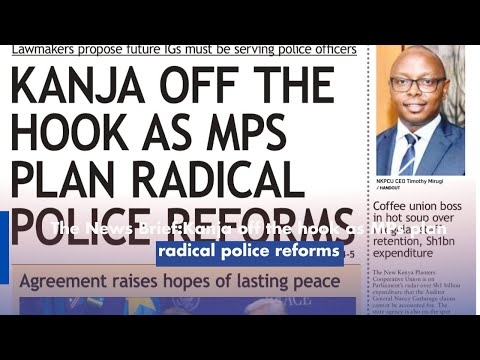Kenya has witnessed tremendous improvement in its road network, making it globally competitive thanks to consistent investment through funding of road maintenance.
A good and reliable transport system network remains vital to the economic development of a country. In fact, the road transport infrastructure in a country is often used as an index to assess the extent of its development.
A value-for-money audit undertaken by Kenya Roads Board between 2018 and 2021 showed 60 per cent of roads under the study are now in good condition up from 40 per cent during the baseline study in 2018. Roads in fair and poor condition reduced from 37 per cent and 23 per cent to 22 per cent and 18 per cent respectively.
To maintain this trajectory, there is need for a conclusive plan that outlines the development and maintenance priority for the entire road network.
This requirement has legal backing—Section 34 (1) of the Kenya Roads Act, 2007, which requires the Minister for Roads in consultation with the road authorities and KRB to prepare a road investment programme for approval by the Minister for Finance once every five years.
KRB has been at the forefront in developing the Road Sector Investment Plan, a medium-term plan that outlines the development and maintenance priorities for the road network, including the type of interventions and funding requirements.
The recent RSIP II 2017-2022 end-term report shows Sh911 billion was allocated for maintenance of the entire road network and development of the National Trunk Road Network against the desired optimal budget of Sh1,033 billion for the period 2017-2022 resulting in a deficit of Sh122 billion for the five-year period.
The development funding for the National Trunk Road network for the entire five-year period was Sh658.17 billion against a projected budget of Sh672 billion, while the roadworks maintenance budget was Sh253 billion for the entire road network.
As a result of this investment, the condition of the road network has improved significantly. As at 2022, 39.7 per cent of the national trunk roads have been marked to be in good condition compared to 26.6 per cent in 2018. Further, there has been a significant improvement in the county roads where 25 per cent of the roads were marked as good, up from 15 per cent in 2018.
The intervention areas identified included routine, performance-based contracting and periodic maintenance for maintenance programmes and rehabilitation, upgrading to bitumen standards and capacity improvement for the development programmes.
The main challenge that the board has had to deal with is the large infrastructure deficits. Ultimately, the board has to come up with new and innovative ways of funding public investments as the use of traditional sources has proven to be a challenge.
The amendment of the Kenya Roads Board Act, 1999 through the Finance Act, 2022 will provide for allocation of 50 per cent of the Fund to maintenance and 50 per cent towards securing additional funds to bridge the funding gap in the road sector of approximately Sh600 billion.
Further, KRB is actively recommending the adoption of Public Private Partnership model to raise cash to finance infrastructure. As per the RSIP II, the financing for the national roads comprised of development funds from the exchequer, annuity, development partners, petroleum development levy and maintenance funds from the Road Maintenance Levy Fund.
By end of FY2021-22, KRB had collected Sh87.4 billion comprising of Road Maintenance Levy Fund and transit tolls for the development and maintenance of the road network, a Sh400 million increase from 2020.
Some of the significant flagship projects that have been completed through road investments under RSIP II include Nairobi Expressway (Mlolongo-JKIA-James Gichuru), upgrading to bitumen standards of Lokichar-Loichangamatak, Lodwar-Lokitang Junction, Garsen-Witu-Lamu, Ngong-Kiserian-Isinya and Kajiado-Imaroro roads.
Others which are substantially complete (97-99 per cent) include, upgrading to bitumen standards of Loichangamatak-Lodwar, Lokitang Junction-Kalobeyei, Kalobeiyei-Nandapal, Kibwezi-Kitui-Migwani (A9) Road and Capacity Expansion of Athi River-Machakos Turnoff (A8) Road. The rehabilitation of Waiyaki Way (A8) and Capacity expansion of KitaleEndebes-Suam road are equally ongoing.
There needs to be stakeholder participation to ensure the country remains on the global map as envisaged by Kenya Vision 2030 and the Big Four agenda and that the country is positioned as a regional hub in line with the African Union agenda 2063 goals.
KRB is currently developing RSIP III for the period 2023-2028 to determine development and maintenance priorities and funding requirements for the road network.
Kenya Roads Board director general
“WATCH: The latest videos from the Star”
















